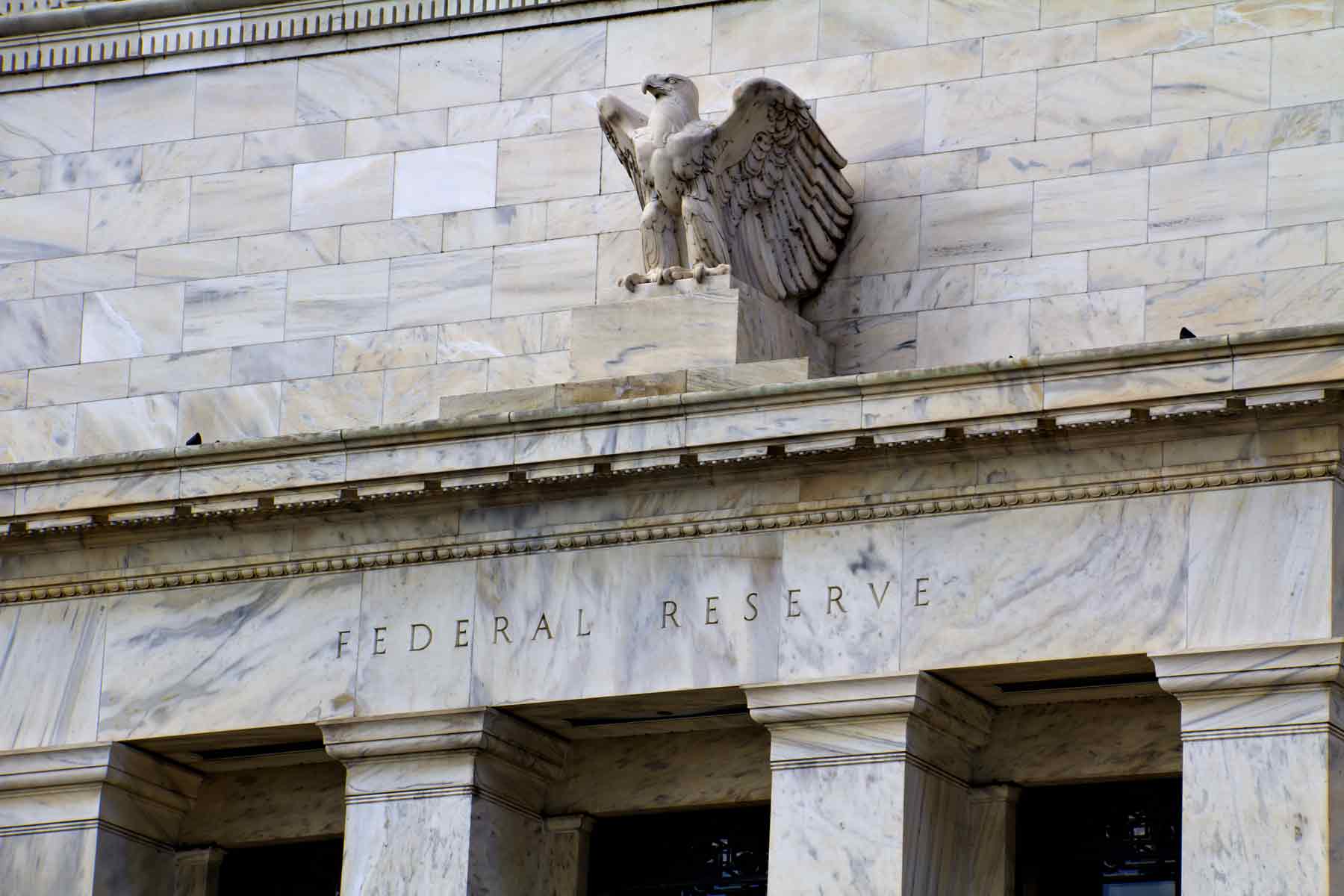The failure of Silicon Valley Bank (SVB) and concerns about financial system health have dominated headlines over recent weeks. To understand what happened and the still-evolving ramifications, let’s start by discussing how banks make money.
Fundamentally, banks profit by borrowing cash cheaply from depositors and then lending it out at more expensive rates. Delving into the mechanics more deeply, banks derive their cash inflows primarily from deposits but also receive capital from debt investors and equity investors. With that money, banks typically keep a little in cash, invest larger amounts in “available-for-sale” and “hold-to-maturity” securities, and then utilize the rest for loans.
Impact of Fed Rate Hikes
A key backstory to the SVB situation is how the Federal Reserve (Fed) has been increasing interest rates for the past year to tame runaway inflation. These hikes have raised the federal funds rate to about 4.5%, a major change from the preceding 15 years when it generally ranged between 0% and 2%.
As rates go up, banks must pay more interest on deposits or else risk losing customers to competitors that offer better returns. In addition, higher rates mean there’s a greater cost involved when banks need to refinance debt. If a bond is issued with a low coupon, and other bonds are issued with higher coupons a few years later, the old bonds become less appealing to buyers. Accordingly, the price they trade at on the market must decrease in order to be equivalently attractive to the new bonds.
Watch our recent webinar “Turmoil in the Banking Sector: Silicon Valley Bank Analysis & Implications”
SVB Saga
This brings us to the case of SVB. One of the 20 largest banks in the country, SVB had benefited greatly from the tech and venture capital (VC) boom, seeing its deposits rise from $62 billion to $124 billion between March 2020 and March 2021. These deposits would eventually peak at roughly $189 billion.
The first problem with SVB was that it assumed deposits would continue to grow at the same exorbitant pace. However, as VC money began to dry up and unprofitable tech companies started to draw upon their cash reserves, SVB’s deposit base slowed. The second issue was that more than 80% of the deposits at SVB exceeded the $250,000 limit insured by the Federal Deposit Insurance Corporation (FDIC).
SVB compounded these problems with a duration mismatch, in that the deposits were primarily short term but it invested that money in long-term assets, incorrectly expecting rates to remain low. In 2021, SVB began to pile into long-term bonds with rates at roughly 1.5%. When rates started to rise due to Fed hikes, the value of these holdings began to decrease, adversely impacting SVB’s equity base. This caused a cascade of events leading to SVB’s downfall:
- Unrealized losses on the securities portfolio reached about $15 billion, nearly as much as the bank’s equity value, and depositor exits accelerated.
- In an effort to raise cash needed to repay existing depositors, SVB sold more than $20 billion of securities to Goldman Sachs at a nearly $2 billion loss.
- To shore up the balance sheet, the bank tried to raise $2 billion of new equity.
- But coming on the heels of a collapse by Silvergate Bank, this initiative only increased the concerns of SVB investors and depositors.
- A classic bank run then ensued — like the famous scene from “It’s a Wonderful Life” — as depositors withdrew a combined $42 billion on March 9, leaving SVB with negative $1 billion and causing the FDIC to close it the next day.
Securing the System
When the FDIC takes over a bank, its guarantee typically covers accounts only up to $250,000. For any amount above that, depositors must simply accept the loss. However, the FDIC, Fed and U.S. Treasury jointly stated on March 12 that because SVB was systemically important, the government would guarantee the entire accounts of all depositors.
Why? To combat the risk of contagion. The banking sector is basically the circulatory system of the economy, with almost all money flowing through it. Accordingly, the government can feel compelled to take drastic action when it believes a threat to the banking system implicitly threatens the entire economy.
Between the closing of SVB on March 10 and the federal announcement on March 12, signs of contagion had already started spreading. Signature Bank, with nearly $89 billion in deposits at the end of 2022, failed just two days after the SVB closure. The government was also observing other data that indicated growing depositor flight from regional banks, influencing its decision to act as well.
What Happens Next?
Although SVB and Signature were two of the most susceptible banks to failure due to their operational practices and investment allocations, they aren’t the only financial institutions with concerning balance sheets. In fact, the FDIC estimates that U.S. banks cumulatively hold about $600 billion in unrealized losses.
Long-term, the Fed rate hikes will make it more challenging for banks to be profitable. Besides the need to offer better rates to maintain loan deposit bases, there will likely be additional deposit migration from smaller regional banks to larger money-center banks that are perceived as “too big to fail.” We also expect increased liquidity and capital regulations to return to the industry.
Is Your Money Safe?
Many clients have been asking us whether it’s safe to keep money at their current bank. For any amount up to $250,000, the answer is definitely yes. Beyond that, we think you can feel pretty secure as long as it’s a good, well-capitalized bank.
But another question to consider is how much money you even should maintain in a traditional savings account, considering how appealing interest rates are right now for cash-like securities such as Treasuries, money-market vehicles and CDs.
While traditional savings accounts generally pay no more than 0.01%, you could earn about 4.5% for a one-year U.S. Treasury bill, which offers security similar to an FDIC guarantee. Similarly, the spread between money market and deposit rates is wider than it has been in a very long time.
Due to this spread, banks can make a lot of money off depositors who leave excess cash in their accounts. While a bank account is great for normal day-to-day expenses and working capital, there might be high opportunity costs associated with it. A bank that pays 0.01% for your excess cash and then invests it in low-risk securities can earn at least 3% or 4% right now, instead of you enjoying that return.
So we encourage you to consider cutting out the middleman in this scenario. If you currently keep excess personal or corporate cash at banks, our advisors would be happy to assist you with earning higher yields directly in any of the low-risk, high-liquidity, U.S. Treasury-type funds and money-market funds available on our platform.
If you’d like to learn more or have any questions about recent economic developments, please contact us.
- Bloomberg
- https://www.apricitas.io/p/the-death-of-silicon-valley-bank
- JP Morgan
- SDCLCON Index (Net % Domestic Respond Reporting Inc. Willingness to Make Consumer Install Loans) Lending Cor GDP Quarterly 31MAR1987-15MAR2023 Copyright© 2023 Bloomberg Finance L.P.
- SPX index (S&P 500 INDEX) spx vs. 10 year Daily 30DEC2022-16MAR2023 Copyright© 2023 Bloomberg Finance L.P.
- FDIC
- Goldman Sachs
- Bank of America, Wells Fargo, US Bank, JPMorgan Chase, Morgan Stanley, Goldman Sachs, Charles Schwab, CNBC





